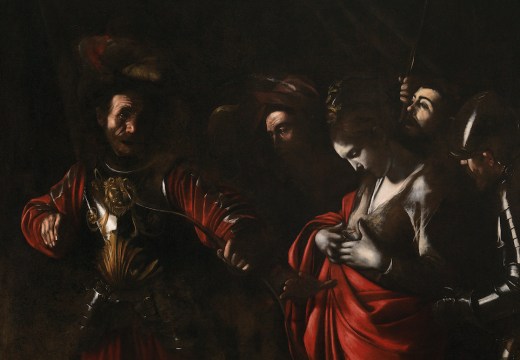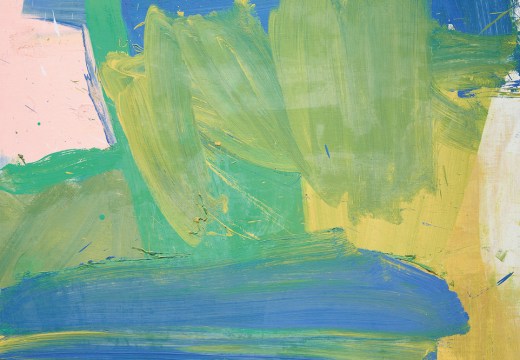A vast bronze spider, its eight legs sprawled outwards, pushes against the limits of the small, dark space that encloses it. As they enter the former threshing barn of the converted farm that now houses Hauser & Wirth’s Somerset outpost, visitors to ‘Louise Bourgeois: Turning Inwards’ are left with little choice. In order to cross over to the rest of the galleries, you must pass between the spider’s legs and beneath its towering frame.
Bourgeois’s career spanned seven decades (she began studying art in 1933, and worked up until her death in 2010) and she didn’t create her first spider sculpture until 1994, but the arachnid has become somewhat synonymous with the artist and her work. But for Bourgeois it held a different, highly personal symbolism: ‘my best friend was my mother and she was deliberate, clever, patient, soothing, reasonable, dainty, subtle, indispensable, neat, and as useful as a spider’. In the atmospheric space of the threshing barn, with its exposed brick walls and ceiling beams and dramatic lighting, the spider has an undeniable emotional impact. The individual nature of our response, however, is undetermined: you might feel a sense of safety and security (as Bourgeois herself described feeling), arachnophobic anxiety, or – as in my case – wonder at the apparently impossible combination of fragility and strength in those spindly bronze legs.

‘Louise Bourgeois. Turning Inwards’, Hauser & Wirth Somerset, 2016. Louise Bourgeois © The Easton Foundation/VAGA, New York/DACS, London 2016. Courtesy Hauser & Wirth. Photo: Ken Adlard
The monumental Spider (1996) might at first threaten to distract from the series of 38 etchings, made in the final four years of Bourgeois’s life and brought together here for the first time, that form the central focus of this exhibition. It is, however, a fitting introduction, capturing the sense of poetic openness that pervades so much of her work: a tangled web of possible meanings and associations, hovering between abstraction and figuration, conveying both a sense of the malevolent and the benign. And, as Bourgeois herself once commented: ‘What is a drawing? It is a secretion, like a thread in a spider’s web’.
Hauser & Wirth Somerset director Alice Workman suggests that ‘there’s a very clear story throughout the exhibition.’ The spaces are organised thematically – an attempt to make some sense of the series of mysterious secretions that Bourgeois began directly and spontaneously etching onto copper plates in 2006. The resulting prints are grouped and displayed alongside a selection of three-dimensional works (for which the etchings sometimes look like preparatory sketches), so as to highlight particular formal resemblances. The spacious Rhoades gallery, for example, contains works apparently relating to the natural world, which bear titles such as Leaves (2006) and Les Fleurs (2007). However, the most powerful pieces in the space weave far more layered, ambiguously allusive images with which to entrap the viewer. Rather than imposing an ordered narrative composed of discrete categories, Bourgeois works best through accumulation and repetition, until particular lines and patterns seem themselves to become etched in our memories.

‘Louise Bourgeois. Turning Inwards’, Hauser & Wirth Somerset, 2016. Louise Bourgeois © The Easton Foundation/VAGA, New York/DACS, London 2016. Courtesy Hauser & Wirth. Photo: Ken Adlard
One 2006 etching is in fact titled Accumulations, depicting a stream of biomorphic forms, similar to a bunch of grapes. The image recalls Untitled (2005), a trio of columns in a vitrine in an earlier gallery. The outlined accumulations spring to three-dimensional life in a billowing structure standing beside a stack of fabric-covered bricks and a steel pole, to which 12 spools of thread and a pendulous rubber shape are attached. The work functions as an almost literal encapsulation of Bourgeois’s central preoccupations: the act of weaving, evoked in the use of fabric and the spools of thread; ambiguous bodies, as suggested by the simultaneously soft and columnar structures which Bourgeois described as her ‘phallic breasts’. Yet, verbal descriptions and explicated allusions can do little to capture the indelible impression these strange, irreducible and tactile forms – just out of reach beyond the glass sheets – leave on the mind.
In the final gallery, etching is combined with a range of other processes and materials including vivid red gouache, fabric relief and text. The power of these colourful, hybrid works, like Bourgeois’s sculptures, somewhat overshadows the quieter force of her predominantly monochrome etchings. The inclusions are merited however, for the insight that the louder pieces provide into the mysterious, inward-looking prints. Similarly, a packed ‘Book Lab’, containing photographic portraits by Alex Van Gelder, monographs, a documentary film and an early series of engravings from an illustrated book, provides a welcome space in which to explore – but not resolve – the complexity of Bourgeois’s life and work.

I Go to Pieces: My Inner Life (#6) (2010), Louise Bourgeois. © The Easton Foundation/VAGA, New York/DACS, London 2016. Courtesy Hauser & Wirth.
It is important that, for someone who spoke so frequently and so well about her own work, this last space provides us with voices and perspectives other than the artist’s own. In the final line inscribed in embroidered text onto a panel of the monumental work I Go to Pieces: My Inner Life (#6) (2010), Bourgeois confesses, in a statement that seems simultaneously despairing and relieved: ‘I can not control everything for ever’. This can only be a good thing for her art, as it is in its boundless uncontrollability that its greatest power resides.
‘Louise Bourgeois: Turning Inwards’ is at Hauser & Wirth Somerset until 1 January 2017.
To coincide with ‘Turning Inwards’, a presentation of portraits of Louise Bourgeois taken by Alex Van Gelder is also on view.
Unlimited access from just $16 every 3 months
Subscribe to get unlimited and exclusive access to the top art stories, interviews and exhibition reviews.














![Masterpiece [Re]discovery 2022. Photo: Ben Fisher Photography, courtesy of Masterpiece London](http://www.apollo-magazine.com/wp-content/uploads/2022/07/MPL2022_4263.jpg)
Why are fathers so absent from art history?